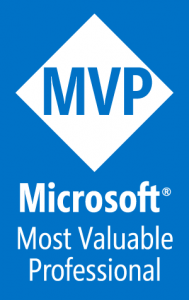Not all blockchains are created equally.
The rapid release of an overwhelming number of alt-coins is causing some confusion. Specifically, what does each blockchain network or coin/token aim to achieve? You might be asking, “Another offering? Why?” Or, “What’s the difference between this blockchain and another?” For those like me — most interested in enterprise blockchain — cryptocurrencies serve to augment or replace traditional money transactions, while enterprise blockchains seek to achieve a larger purpose. But what does that mean?
The first blockchain, and by far the most popular, is of course, bitcoin. Although a bitcoin transaction can record a short message with each transaction, by and large, bitcoin helps transfer only a monetary value from one account to another. In other words, it’s a currency. Bitcoin as a currency has its detractors for issues such as transaction delays, high fees, the consensus algorithm (proof-of-work) is wasting energy, and others. Further, there are many strategies being developed and deployed to address such concerns.
As such, new blockchains/cryptocurrencies have been created or proposed. These new networks offer “coins” that are designed to be used as currency. Examples include Monero, Ripple, and ZCash, to name just a few. These types of alt-coins record value transfers like bitcoin, but they each differ in security, consensus algorithms, privacy, and more.
The forward-thinking visionaries of blockchain saw that the distributed nature of blockchain, with its security and consensus algorithm, could be used for much more than currency transfer. In 2013, Vitalik Buterin proposed a method for blockchain to enable smart contracts, and in 2015 the Ethereum platform came online. The primary “coin” for this blockchain, Ether, is more of a token designed to provide “gas” for pricing the internal workings of overall system resources. Although considered a cryptocurrency, it can be traded on exchanges and used to run other true cryptocurrencies, Ether acts much more like a commodity such as corn, wheat, or say bio-diesel. Ether is the “fuel” that someone can acquire to run specific transactions.
The difference between currency coins and enterprise blockchain tokens
Although bitcoin and alt-coins are considered cryptocurrencies, it’s important to identify the difference between a currency coin and a commodity token. Cryptocurrencies like bitcoin help us transfer “money” from one person to another. Say I want to purchase a candy bar. I’d like to use money to do this. I want to transfer a value of coin from me to the merchant, and in the world of blockchain, we’d both prefer a blockchain optimized for simple value transfer. In the non-blockchain world, most likely the merchant would like $1 for the candy bar rather than 1 Kg of corn.
The smart contracts of Ethereum have led to an entirely new breed of networks, though many still run on Ethereum. These new networks such as EOS or Cardano are based on concepts of distributed computing and in EOS’s case, a publicly distributed operating system that provides truly open distributed computing. When I look at these types of networks I see tokens rather than coins. Here we return to the token analogies of commodities such as corn, wheat, bio-diesel, etc.
These public distribution systems could be used by anyone to do almost anything, such as distributed applications and distributed storage. Of course, users of the network will have to pay for the services they use. A given blockchain’s token provides that value transfer, and while the tokens may be traded and exchanged quickly on many online exchanges, the networks themselves are optimized for value transfer of resources.
Exchanges and Trading
When you look at cryptocurrency exchanges, all cryptocurrencies look similar besides their value, but don’t be fooled. There’s value in the trading that does occur with many of these public enterprise blockchains.
Just as commodity traders at the Chicago Board of Trade provide a market to move corn from the farmer to the ethanol pump or supermarket, cryptocurrency traders provide liquidly for public enterprise blockchains. Exchanges offer a path to exchange.
What I also find fascinating is some network platforms such as EOS are not yet available, but the creators generated a coin on the Ethereum network that offers way to stake claim. If you believe in the concept that EOS claims to offer at some point, the coin offers a method to invest in that promise now….or a way to lose all of your money.
Let’s face it, we’re in a blockchain bubble just like we saw in the .com days of 2000. Most blockchains will likely fail. While I am a believer in blockchain, I see cryptocurrency trading as little more than a risky gamble at the moment.
Does this mean we’ll need to transform how we look at “currency” in the online world? Quite possibly. What do you think? Let me know.






It will be interesting to see what happens here in the US around utility tokens versus equity tokens, and whether they are both ultimately subject to federal securities regulations. Some states, like Wyoming, Colorado, and Nevada are taking steps to create their own definitions, but until the U.S. Securities and Exchange Commission (SEC) makes up its mind, more and more US companies looking to take advantage of this model will move their development and operations outside of the US.
I completely agree. Certain forces will do all they can to not allow true digital currencies such as BitCoin, Ripple, LiteCoin, and others be treated like currency. For those that want to use ICO’s to raise money, why organize that in the US at all?